
Stanage - The queen of grit. The longest, finest outcrop of the best, most unique rock Britain has to offer. Along with climbing legend Ron Fawcett, many have voted with their feet and made the pilgrimage to the sinuous moor-top edge and never looked back. A good majority having found their nirvana: The best crag in Britain?
Stanage is the longest gritstone crag. It is up to twenty metres high, but stretches for over a mile, giving around 2000 routes. It is located in the Peak District in Northern England, close to the popular climber's city of Sheffield. More info on Sheffield in this UKC article.
The Climbing
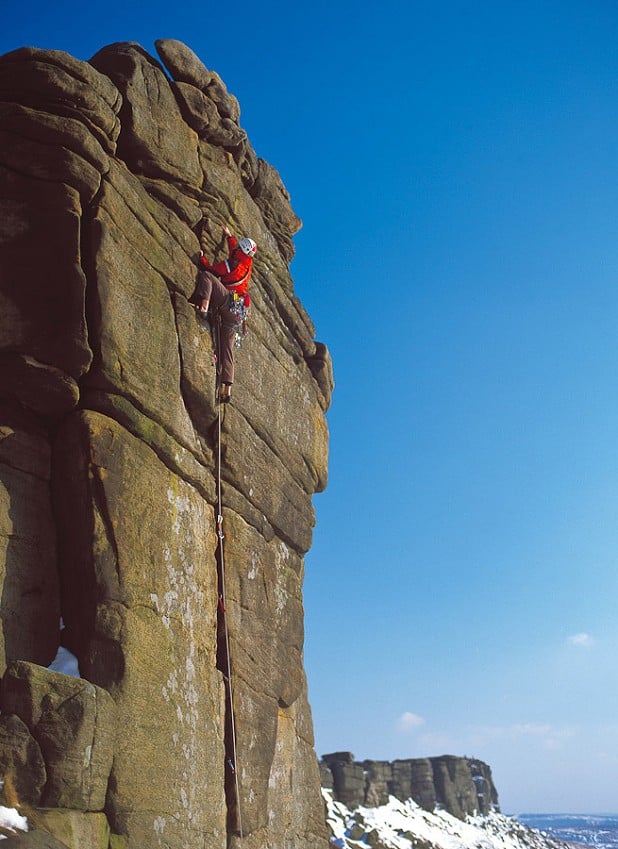
Though requiring its own fairly weighty guidebook, Stanage is not famous simply for its quantity of climbing; it is quality on which its reputation is built. All grit is not created equal. No other grit edge has an arete to rival Archangel (E3 5b) ; Stanage has two in ten yards. From end to end the rock is invariably sound, with no looseness and little vegetation in even the quietest of its corners. As a Cheshire lad I'll submit that for texture it doesn't quite equal the Seven Clouds/ Far Skyline beds at the Roaches, but Stanage's architecture and scope win out. No idle label is 'God's own rock'.
The UKC database for Stanage lists some c.1700 routes, representing all styles. To generalise wildly, the climbing is broadly vertical in nature, with the odd slab and occasional roof, with almost all the routes following strong features in the form of: a crack, an arete, a groove or corner, usually broken by horizontal breaks. This makes the grab-and-pull, hold-to-hold technique that many develop indoors or on less perfect rock a little redundant. 3-D awareness and full-body inventiveness will go far on gritstone, as will a confident approach on non-positive holds such as slopers or jams.
A Brief History
The name Stanage is a contraction of Stane (or Stone) Edge. Despite being set in a landscape of similar features, as long ago as folk began naming things, Stanage was simply itself: The Stone Edge. Neolithic remains below the edge tell a tale of constant human activity over the last 5,000 years, with the ancients no doubt using the caves along the edge and becoming comfortable with vertical movement along the way.
The first recorded routes were ascended in late Victorian times by the likes of Jimmy Puttrell, Ivar Berg, Morley Wood and Colin Kirkus all of whom made important ascents in the first half of the twentieth century nudging standards into what is now the extreme grades. However it was after The Second World War that things really began to get going, with Joe Brown's ascents of the now world famous The Left Unconquerable (E1 5b) and The Right Unconquerable (HVS 5a) cracks. Since then many of Britain's best and most famous names have left their mark at Stanage: Don Whillan's Centaur (E2 5c) , John Allen's Old Friends (E4 6a) and with Steve Bancroft Nectar (E4 6b) , Jerry Moffatt's Ulysses Bow (f6A+) , Ron Fawcett's Careless Torque (f8A) , Jonny Dawes's Sad Amongst Friends (E7 7a) , Robin Barker's Marbellous (E8 7a) and Jason Myers's Brad Pit (f7C) - to name just a few.
Stanage Sectors (south to north)
- The Southern Section of the edge is fairly broken but offers good bouldering and short routes close to the car, with a few harder classics on The Cowperstone and Apparent North buttress.
- The Popular End is true to its name, and with good reason. No other crag in England can boast such a concentration of climbing; a kilometre of continuous routes at all grades on some of the finest gritstone on the planet.
- The Plantation offers yet more unbroken crag packed with quality routes, plus some of the best bouldering in the country.
- Count's Buttress and Enclosure areas are a little more broken and hence quieter, though worth exploring.
- High Neb is the second-most popular area, a little longer walk but plenty of classics thoughout the grade spectrum.
- The Northern End is more broken with a few bigger buttresses; Crow Chin, Marble Wall and the Stanage End would be the popular 'best bits' on many lesser crags.
Route suggestions
Almost all of these routes and problems list below are true rites-of-passage; an ascent if any one a memory not easily forgotten.
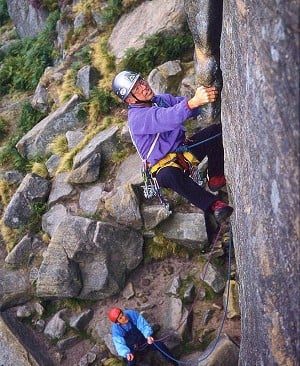
- Heaven Crack (VD),
- Flying Buttress (HVD 4a),
- High Neb Buttress (VS 4c)
- October Slab (HS 4b)
- Inverted V (VS 4b)
HVS-E3
- Flying Buttress Direct (E1 5b)
- Goliath's Groove (HVS 5a)
- The Right Unconquerable (HVS 5a)
- Quietus (E2 5c)
- Wuthering (E2 5b)
- Archangel (E3 5b)
E4+
- Old Friends (E4 6a)
- Nectar (E4 6b)
- White Wand (E5 6a)
- Ulysses Bow (f6A+)
- Chip Shop Brawl (f7A+)
- [climb ("Sad Amongst Friends")
Bouldering
- Pebble Arête (f6A)
- Crescent Arete (E6 6a)
- Not to be Taken Away (f6C)
- Deliverance (f7B+)
- Brad Pit (f7C)
- Careless Torque (f8A)
Adam Long's Stanage Photo Gallery
Logistics
When to Go
There is climbing to be had on Stanage every day of the year. The crag faces between south and west depending where you are, so gets the sun much of the day except first thing. Midges can be a problem in high summer, as can greasy rock, whereas for the harder routes cold temps and the associated legendary increase in friction are a pre-requisite. Generally spring and autumn give the most pleasant conditions for trad climbing, with winter being the peak season for bouldering and hard routes. However I've climbed tops-off in February and bouldered hard in July, so it's more a case of matching the weather with the location and type of climbing. Wind can be a plus, drying the rock and improving conditions, or a bane making belaying on the top an ordeal.
Gear
Rarely reaching more than 15 metres in height, a standard rack will suffice for most of the routes, with cams being particularly useful for the horizontal breaks. Most routes are fine on a single rope though the odd line is better done with double ropes – generally one half-rope will be long enough to use doubled rather than carrying two up. Coupling the short routes and approaches with the abrasive rock means sturdy gear is a better option than lightweight.
Outdoor Shops Advertise here
No Premier Listings found in this area
How to Get There
From the south or east, head up the M1 to junction 29. Take the 2nd exit for Chesterfield and then follow the A619 to Baslow. At the second roundabout in Baslow turn right to Calver, take a right at the crossroads then a left in Grindleford to arrive in Hathersage. Turn right in the village, then left on the bend at the top of the main street and a minor road takes you up to the parking for the edge's southern end.
From the North-east, head down the M1 to junction 36. Follow the A61 to Sheffield then turn right onto the A57. Follow this to Ladybower reservoir, turn left over the bridge, then left again after about a mile. This takes you up past Bamford and then to Stanage.
From the west, get on to the M67, then take the A57 through Glossop and over the Snake Pass. At Ladybower reservoir turn right over the bridge, then left after about a mile. This takes you up past Bamford and then to Stanage.
Accommodation Advertise here
No Premier Listings found in this area
The best option for camping is the Peak Park- owned North Lees campsite tucked in the valley below The Plantation, from where its a twenty minute walk to the crag or a half-hour walk to Hathersage, £4 per night.
There are several classic bivvy spots along the edge, use by small, responsible groups only please. Thorpe farm run several bunkhouses nearby accommodating up to 60 people for around £10 a night depending on numbers. Most of the pubs in the area (see below) also do mid-priced accommodation, or for a luxury option The George Hotel in Hathersage can provide a four-poster room at £180 for a Saturday night.
Weather
As mentioned above, the weather is a factor for choosing where and when to go, but only prolonged rain is likely to stop the determined. Generally October and November are the wettest months but can still offer great days with fantastic autumn colours. February is the best choice for the hardcore with a winning combination of little rainfall and low temps. At any time of year, a westerly or southerly breeze will soon dry the crag in only a couple of hours.
Food and Supplies
The village of Hathersage itself has several decent pubs – The Little John (in the village centre) serves standard pub fare with generous portions, The Scotsman's Pack (up School lane towards Stanage), The Millstone (a mile or so up Sheffield Road/ A187 towards Burbage South) and The Plough ( hafl a mile south towards Grindleford) all do good food at reasonable prices. For the gastros The George in Hathersage provides a 3 course meal for £35. Nearby Hathersage is overrun with outdoor shops, with the Outside next to the petrol station being the best for rock gear and sound advice. The petrol station itself is a small Spar shop selling all the essentials. Round the corner on Station road is a bigger supermarket and bakery. If you've still not found what you're after, Sheffield's giant supermarkets are just twenty minutes drive over the hill. Options for decent pub food are plentiful round here.
Instructor/Guides Advertise here
No Premier Listings found in this area
Other Activities
On a really wet day, the best option might be the show caves in nearby Castleton, or a tour of the grand Chatsworth house. If you just fancy a rest day take advantage of the area's fantastic walking, or relax with some fly-fishing on Ladybower reservoir. Remember Sheffield is only eight miles away with all the diversions a big city offers.
Climbing Walls Advertise here

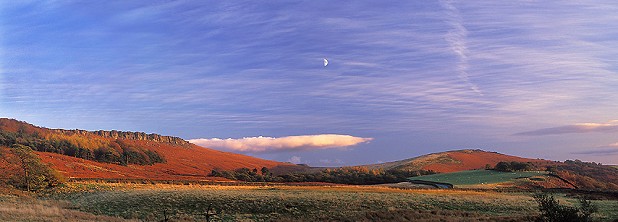
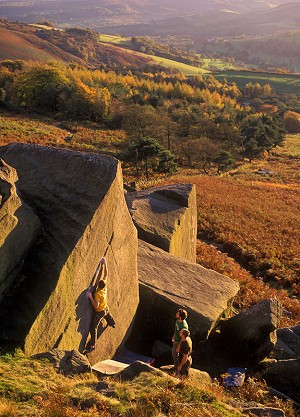
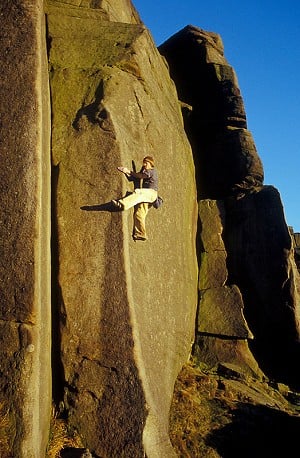

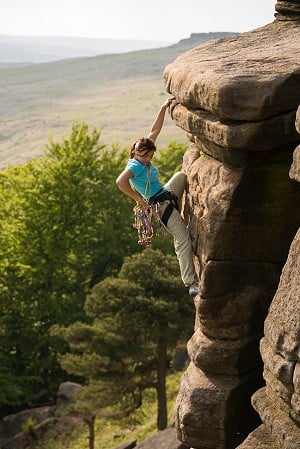
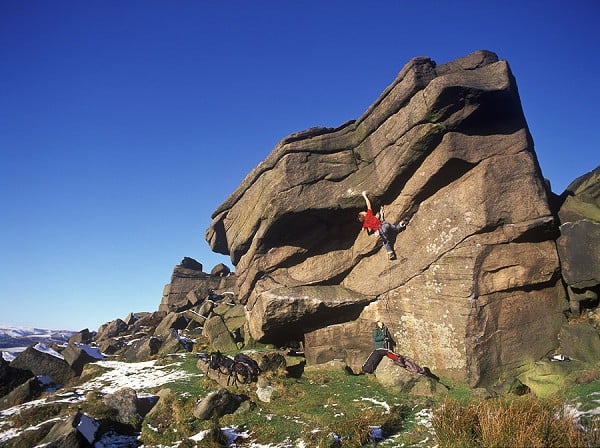
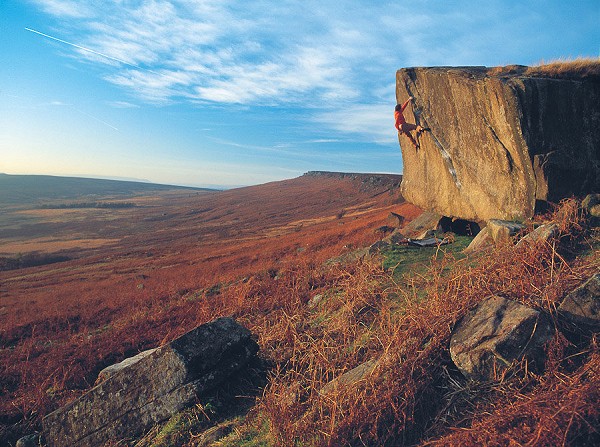
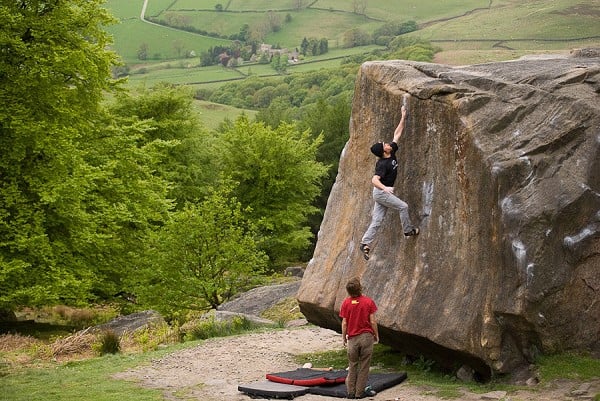
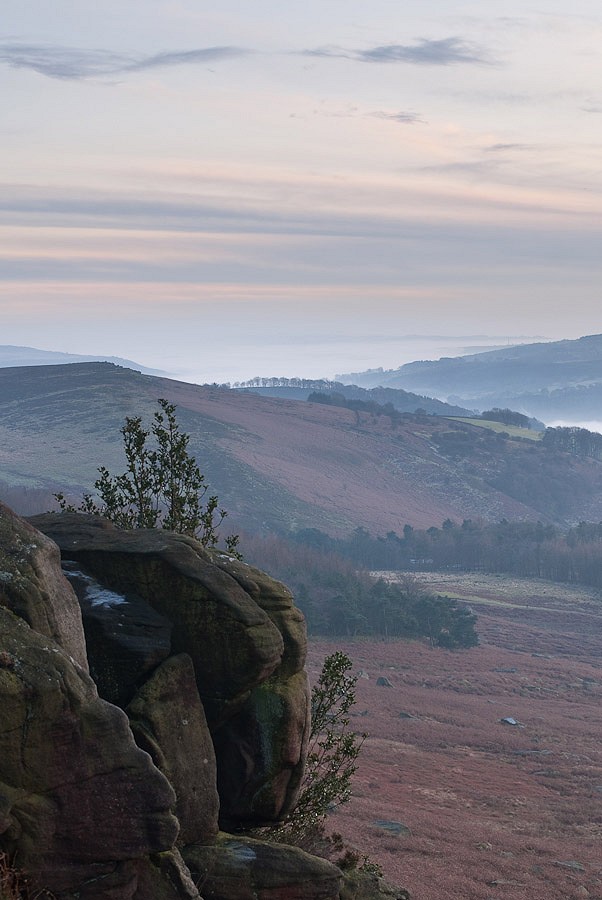
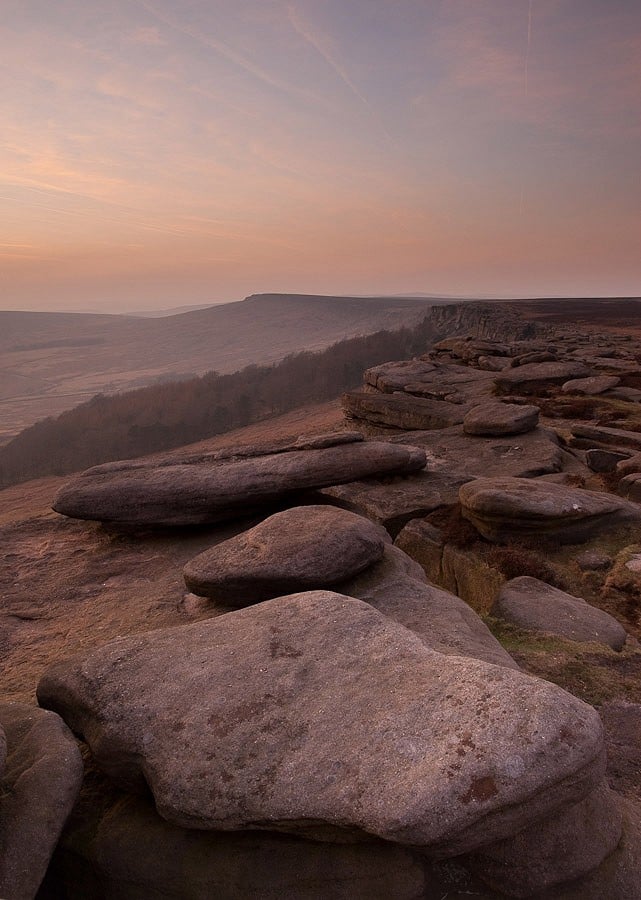

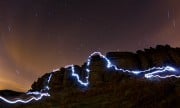

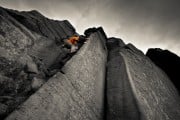


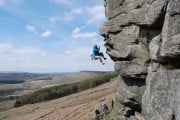
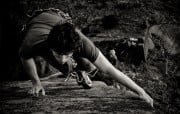
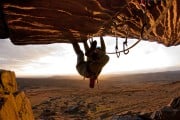





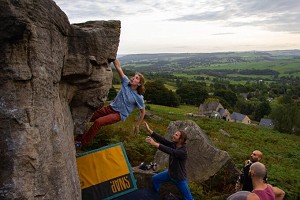
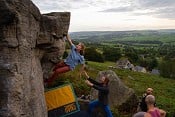
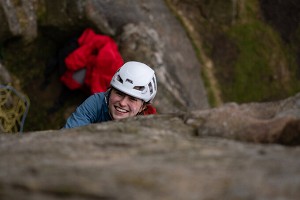
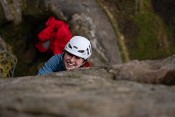



Comments